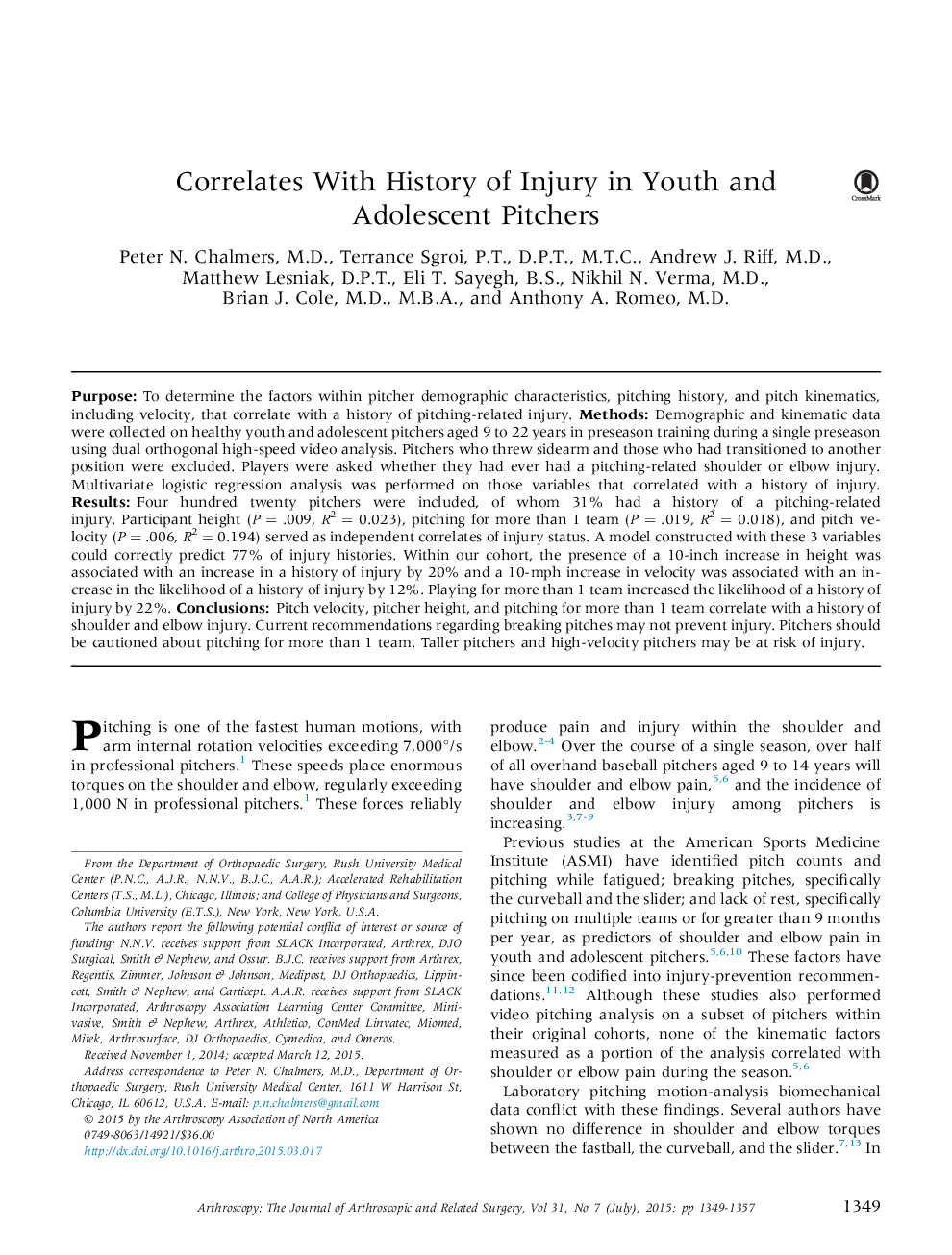| کد مقاله | کد نشریه | سال انتشار | مقاله انگلیسی | نسخه تمام متن |
|---|---|---|---|---|
| 4042361 | 1603481 | 2015 | 9 صفحه PDF | دانلود رایگان |
PurposeTo determine the factors within pitcher demographic characteristics, pitching history, and pitch kinematics, including velocity, that correlate with a history of pitching-related injury.MethodsDemographic and kinematic data were collected on healthy youth and adolescent pitchers aged 9 to 22 years in preseason training during a single preseason using dual orthogonal high-speed video analysis. Pitchers who threw sidearm and those who had transitioned to another position were excluded. Players were asked whether they had ever had a pitching-related shoulder or elbow injury. Multivariate logistic regression analysis was performed on those variables that correlated with a history of injury.ResultsFour hundred twenty pitchers were included, of whom 31% had a history of a pitching-related injury. Participant height (P = .009, R2 = 0.023), pitching for more than 1 team (P = .019, R2 = 0.018), and pitch velocity (P = .006, R2 = 0.194) served as independent correlates of injury status. A model constructed with these 3 variables could correctly predict 77% of injury histories. Within our cohort, the presence of a 10-inch increase in height was associated with an increase in a history of injury by 20% and a 10-mph increase in velocity was associated with an increase in the likelihood of a history of injury by 12%. Playing for more than 1 team increased the likelihood of a history of injury by 22%.ConclusionsPitch velocity, pitcher height, and pitching for more than 1 team correlate with a history of shoulder and elbow injury. Current recommendations regarding breaking pitches may not prevent injury. Pitchers should be cautioned about pitching for more than 1 team. Taller pitchers and high-velocity pitchers may be at risk of injury.
Journal: Arthroscopy: The Journal of Arthroscopic & Related Surgery - Volume 31, Issue 7, July 2015, Pages 1349–1357
